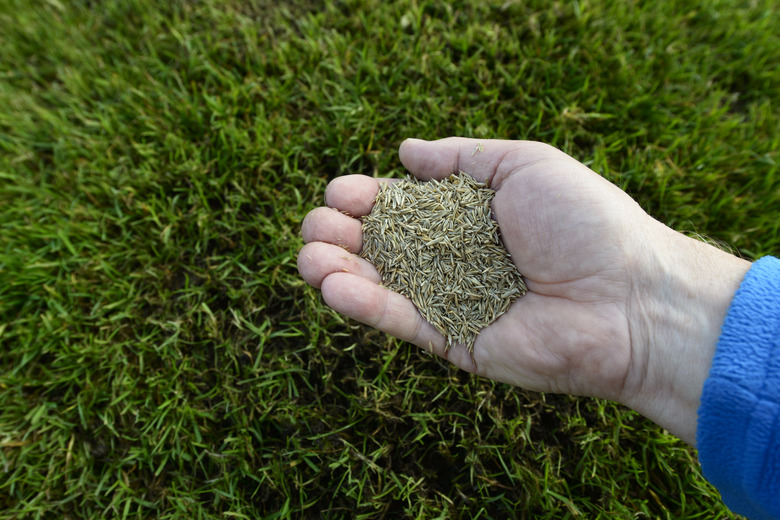How To Make A Yard Ready To Plant Grass Seed
Preparation is the key to a successful lawn seeding, as is the type of seed you choose and the soil where the seed germinates will make a happy home for many seasons yet to come. It takes a lot for each glowing blade of grass to grow in uniform tandem with its fellow leaves, so don't expect to throw down a handful of grass seeds and be done with the job. When the steps to sow grass seed are taken properly, a lush lawn is sure to sprout.
Preparing Soil for Grass Seed
Preparing Soil for Grass Seed
The best way to grow grass is to start at the basic foundation: the soil. Before you begin, check the pH balance of the soil. This measures the acid and alkaline in the soil, which ranges from zero to 14. For good grass growing, a pH balance between 6.0 and 7.5 is ideal. If the soil is below 6.0, add lime to bring up the balance of alkaline to the acidic soil. If the pH is above 7.5, it is mildly alkaline, and a little peat moss added to the soil can create the better conditions to grow good grass.
Make sure to till the lawn before seeding, particularly if the ground is truly hardened and the soil is packed. For this, a tilling machine can be rented from big box home improvement stores to turn the dirt over quickly and easily. This can take a few hours or the better part of an afternoon for the average-size lawn. After raking and removing the old grass and weeds that the tiller loosens, incorporate organic amendments such as compost. Also include a fertilizer, based on soil-test results, to give the grass a good, strong start.
Choosing the Best Seed
Choosing the Best Seed
There are more than a dozen grass seeds that are widely available. Warm-season grasses thrive in warm weather, while cool-season grasses grow best when the temperatures undergo more extreme fluctuations. Seed variety types that are best for warm-season grasses include St. Augustine (Stenotaphrum secundatum, zones 8-10), Bahia (Paspalum notatum, zones 7-11), Bermuda (Cynodon dactylon, zones 7-10) and Zoysia (Zoysia spp., zones 5-10). These are also good for reseeding in the winter in warmer-climate regions. Cool season grasses include Kentucky bluegrass (Poa pratensis, zones 3-7), fine fescue (Festuca spp., zones 3-7), and perennial ryegrass (Lolium perenne, zones 5 through 7). For a disease-resistant lawn, a blend of several varieties of one type of grass seed or a mixture of a combination of different types is the best choice. This seed blend will also offer a more uniform lawn once the grass has grown.
For small patches of soil, you can hand sow the seeds. For larger areas, a lawn spreader will allow the seed to spread more evenly. If you have any bald patches once the seeds begin to take root, simply reseed the area by hand. Once the seed is down, cover it with mulch, garden fabric or a layer of straw to keep moisture in and birds and other seed lovers out.
Benefits of a Beautiful Yard
Benefits of a Beautiful Yard
Aside from the aesthetic value of a wide expanse of greenery leading up to your door, a healthy yard offers many benefits. A lush lawn increases a home's value when you are looking to sell the property and can reduce the street noise from cars or businesses that surround the home. The tiny blades waving in the wind actually attract dust and keep it from the air. A wide swath of cool grasses cuts down on heat emanating from a bare patch of land. Those green stalks growing toward the sky also increase oxygen in the atmosphere.
